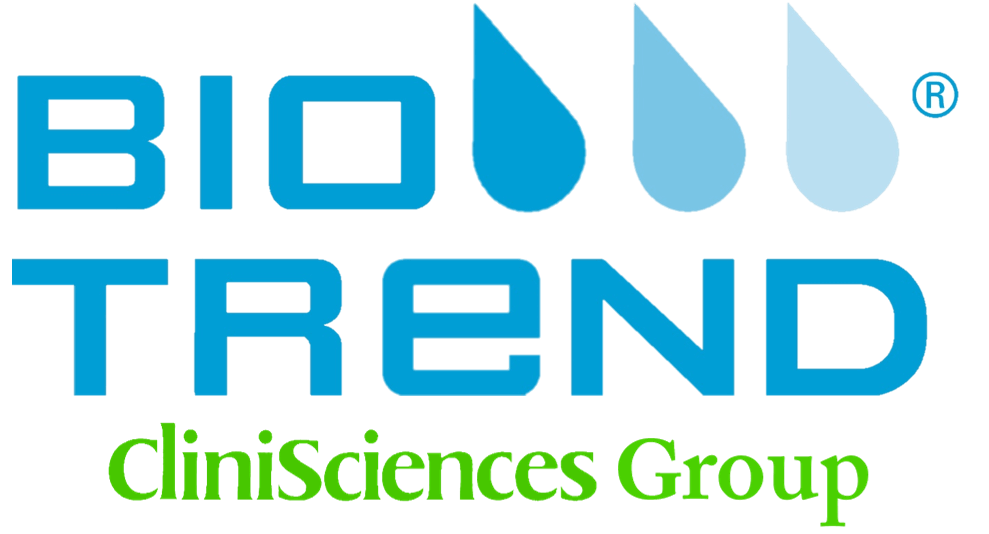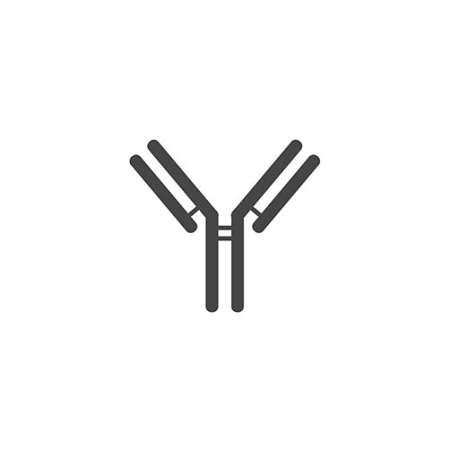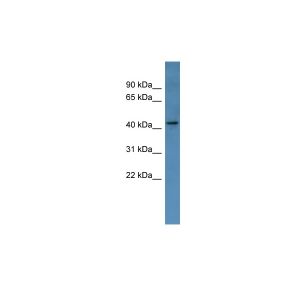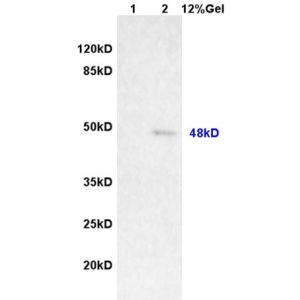MAGEA11 Antibody - middle region : FITC
Katalog-Nummer ARP59877_P050-FITC
Size : 100ul
Marke : Aviva Systems Biology
| Datasheets/Manuals | Printable datasheet for anti-MAGEA11 (ARP59877_P050-FITC) antibody |
|---|
| Predicted Species Reactivity | Human, Zebrafish |
|---|---|
| Product Format | Liquid. Purified antibody supplied in 1x PBS buffer. |
| Clonality | Polyclonal |
| Host | Rabbit |
| Conjugation | FITC: Fluorescein Isothiocyanate |
| Application | WB |
| Reconstitution and Storage | All conjugated antibodies should be stored in light-protected vials or covered with a light protecting material (i.e. aluminum foil). Conjugated antibodies are stable for at least 12 months at 4C. If longer storage is desired (24 months), conjugates may be diluted with up to 50% glycerol and stored at -20C to -80C. Freezing and thawing conjugated antibodies will compromise enzyme activity as well as antibody binding. |
| Immunogen | The immunogen is a synthetic peptide directed towards the middle region of human MAGEA11 |
| Purification | Affinity Purified |
| Predicted Homology Based on Immunogen Sequence | Human: 100%; Zebrafish: 77% |
| Peptide Sequence | Synthetic peptide located within the following region: FSSTLNVGTLEELPAAESPSPPQSPQEESFSPTAMDAIFGSLSDEGSGSQ |
| Concentration | 0.5 mg/ml |
| Blocking Peptide | For anti-MAGEA11 (ARP59877_P050-FITC) antibody is Catalog # AAP59877 (Previous Catalog # AAPP46037) |
| Gene Symbol | MAGEA11 |
|---|---|
| Gene Full Name | Melanoma antigen family A, 11 |
| Alias Symbols | CT1.11, MAGE11, MAGE-11, MAGEA-11 |
| NCBI Gene Id | 4110 |
| Protein Name | Melanoma-associated antigen 11 |
| Description of Target | This gene is a member of the MAGEA gene family. The members of this family encode proteins with 50 to 80% sequence identity to each other. The promoters and first exons of the MAGEA genes show considerable variability, suggesting that the existence of this gene family enables the same function to be expressed under different transcriptional controls. The MAGEA genes are clustered at chromosomal location Xq28. They have been implicated in some hereditary disorders, such as dyskeratosis congenita. Two transcript variants encoding different isoforms have been found for this gene. |
| Uniprot ID | P43364 |
| Protein Accession # | NP_005357 |
| Nucleotide Accession # | NM_005366 |
| Protein Size (# AA) | 429 |
| Molecular Weight | 48kDa |
| Protein Interactions | PIN4; NOS3; NDUFB9; IL11; IL6ST; HOXB5; THEM5; ZCCHC12; CDC20B; C18orf54; ACMSD; SNX20; TMEM123; BEX2; PCBD2; CCDC14; CCDC146; RADIL; TRMT1; DOCK10; RBM23; WDYHV1; DNAJC10; DIEXF; PNKD; TXN2; CLUAP1; TCF25; USP20; ENOX2; BCL2L11; GNPDA1; JADE3; MTA1; TPM3 |






